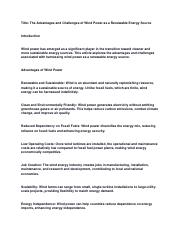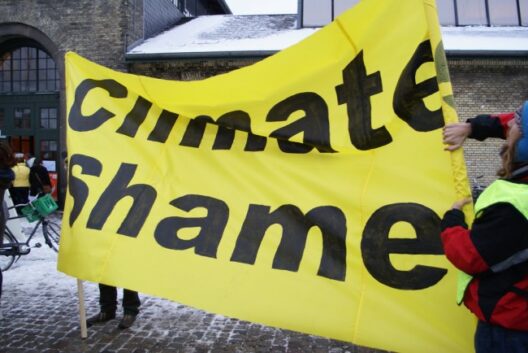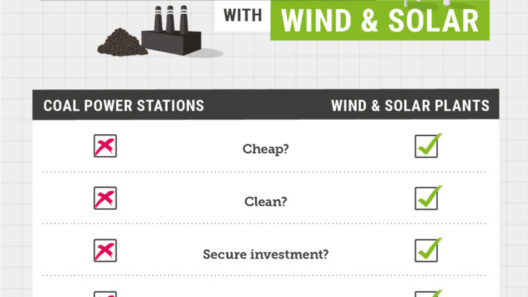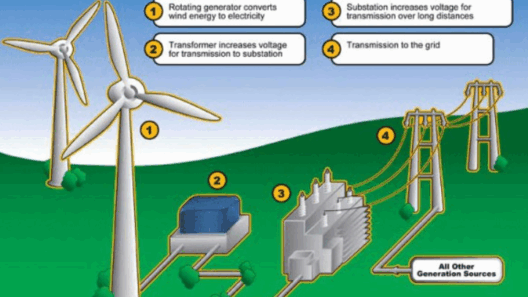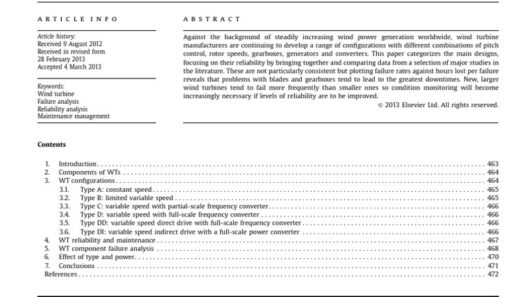Wind energy is often heralded as a beacon of hope in the quest for sustainable energy. However, this shining star is not without its dim spots. Beneath the surface of its numerous advantages lies a complex tapestry woven with challenges and limitations that merit a thorough examination. Unraveling these intricacies reveals an essential narrative about the balance required in our energy pursuits.
To understand the drawbacks of wind energy, we must first consider its nature—a dependably fickle force of nature. Just like the gusts that playfully dance across the blade of a turbine, the performance and reliability of wind energy can be unpredictable. This fickleness is primarily governed by the following components: energy intermittency, ecological impact, and economic limitations.
Energy Intermittency: The Unpredictable Dance of the Wind
Wind energy generation is inherently intermittent, akin to waves lapping at a shore in varying rhythms. Wind does not blow uniformly; it ebbs and flows, often erratically. This inconsistency presents significant challenges in meeting the constant demand for electricity. When demand spikes, turbines may be idle when the wind is calm, and reliance on wind energy alone can lead to energy shortages. This intermittency necessitates the integration of backup power sources, often fossil fuels, which can compromise the very goal of reducing carbon emissions.
Moreover, the geographical limitations dictate where turbines can effectively capture wind currents. Not all regions harbor the gusts necessary for robust energy production, creating disparity in energy distribution. Areas that command favorable wind conditions may not align with population centers demanding power, resulting in inefficiencies akin to a majestic ship anchored far from its destination.
Ecological Impact: The Hidden Costs of Green Energy
While wind turbines stand as a symbol of progress toward clean energy, they do impose ecological repercussions that must be acknowledged. The siting of wind farms can disrupt local wildlife habitats and migratory patterns. Birds and bats, two groups particularly vulnerable to turbine blades, can fall victim to collisions, which in turn can have cascading effects on local ecosystems.
The construction of wind farms often necessitates substantial alterations to landscapes, similarly to how a sculptor carves a marble block—beauty emerges, but so do unintended scars on the environment. The introduction of infrastructure to support these installations can encroach upon delicate ecosystems, creating disturbances that are often irreversible.
The noise pollution generated by turbine operations can also disrupt the tranquility of both human and animal life in neighboring areas, further stressing wildlife that relies on natural acoustic signals for navigation and communication. Thus, while wind energy may tout its cleanliness, it is imperative to evaluate its broader ecological footprint.
Economic Limitations: The Price of Progress
Financial challenges also compound the issues associated with wind energy deployment. Although operational costs for wind farms can be relatively low once established, the initial capital investment remains a daunting barrier. Developing a wind energy infrastructure requires substantial funding—money that might otherwise bolster alternative renewable sources, such as solar or hydroelectric projects.
Moreover, the economic viability of wind energy can fluctuate based on government policies and incentives. In regions where lawmakers hesitate to support renewable initiatives, the wind market can face uncertainty similar to a ship navigating through fog. Investors require confidence in sustained governmental support to invest in such long-term ventures, yet shifting political landscapes can create an atmosphere of volatility detrimental to growth.
The maintenance and replacement of aging turbine components represent another layer of financial commitment. While turbines have relatively long lifespans, the eventual degradation of parts demands continual investment, and this aspect often receives less focus than it should. It’s essential to remember that maintenance is akin to the diligent stewardship of a garden—without care, even the most beautiful plants can wither away.
Conclusion: Navigating the Wind’s Complex Terrain
As we continue to explore the potential of wind energy, it’s crucial to navigate the complexities surrounding it. The enchanting promise of harnessing natural forces must be tempered with awareness of its limitations. Factors such as energy intermittency, ecological impact, and economic constraints must be examined deeply.
While wind energy undeniably offers an avenue toward a more sustainable future, it is also a reminder that every solution comes with its own set of challenges. To truly embrace wind energy’s potential, we must engage in informed discussions that recognize both its remarkable attributes and the areas where improvement is necessary. This understanding will pave the way for balanced, responsible energy strategies that honor the environment and prioritize the health of our planet.



